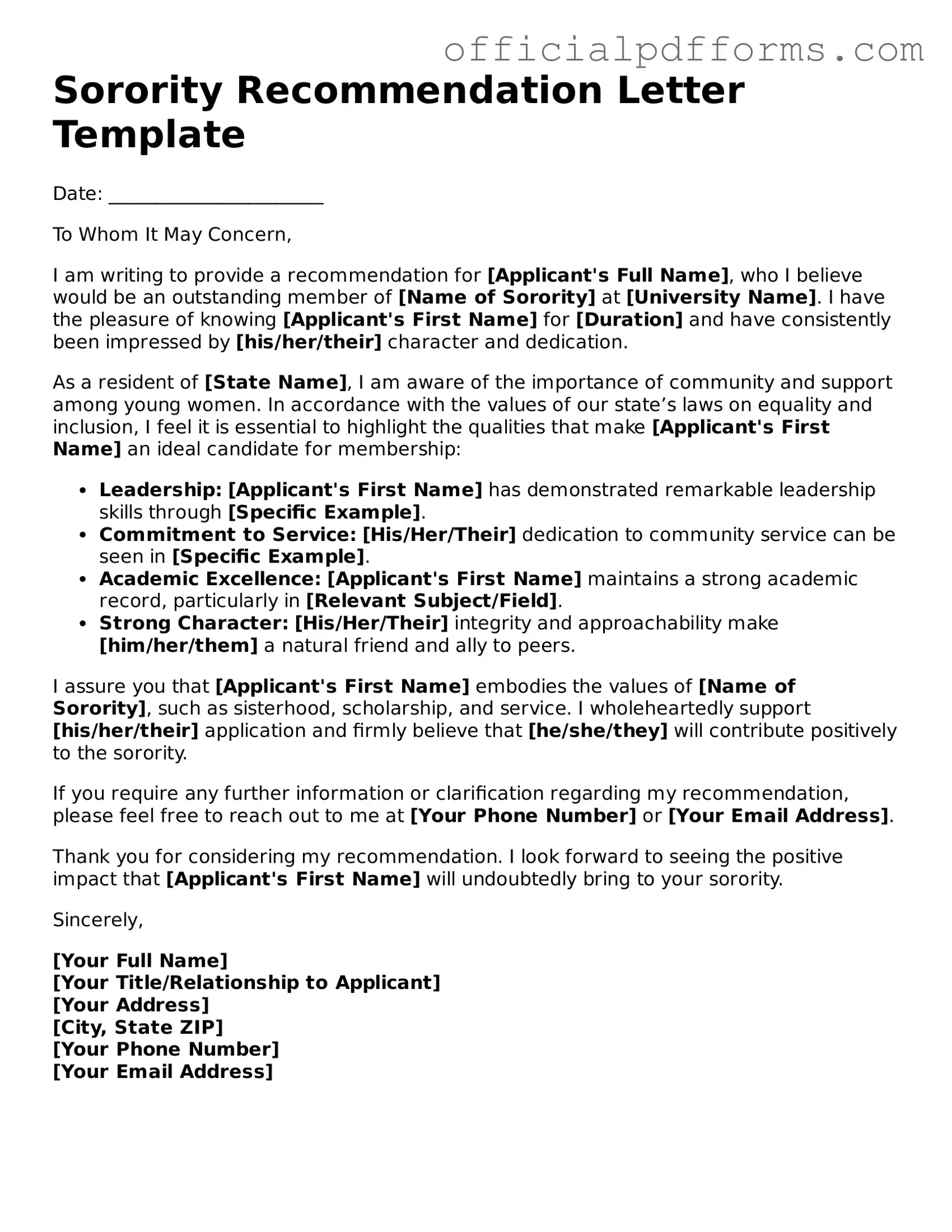What is a Sorority Recommendation Letter?
A Sorority Recommendation Letter is a document that supports a potential new member's application to join a sorority. This letter is typically written by a current or alumna member of the sorority and highlights the applicant's qualities, achievements, and suitability for membership. It serves as a personal endorsement that can significantly enhance the applicant's chances of being invited to join the sorority.
Who should write the Recommendation Letter?
The ideal writer of a Sorority Recommendation Letter is someone who knows the applicant well and can speak to their character and accomplishments. This may include:
-
A current member of the sorority.
-
An alumna of the sorority.
-
A teacher, coach, or mentor who can provide insights into the applicant's strengths.
It is important that the writer has a positive relationship with the applicant and can provide specific examples of their qualities.
When should the Recommendation Letter be submitted?
It is best to submit the Sorority Recommendation Letter well in advance of the sorority recruitment period. Each sorority may have its own deadlines, so it is crucial to check the specific dates for the sorority in question. Generally, submitting the letter a few weeks before recruitment begins is advisable to ensure it is considered during the selection process.
The Recommendation Letter should include several key elements:
-
Introduction:
A brief introduction of the writer and their relationship to the applicant.
-
Personal Qualities:
Specific traits that make the applicant a good fit for the sorority, such as leadership skills, academic achievements, and community involvement.
-
Examples:
Anecdotes or examples that illustrate the applicant’s character and contributions.
-
Conclusion:
A strong closing statement recommending the applicant for membership.
Can I submit multiple Recommendation Letters?
Yes, it is acceptable for an applicant to have multiple Recommendation Letters. In fact, having several letters from different individuals can provide a well-rounded view of the applicant. However, it is important to ensure that each letter is unique and highlights different aspects of the applicant's character and achievements. Quality is more important than quantity, so focus on obtaining strong, personalized letters.
